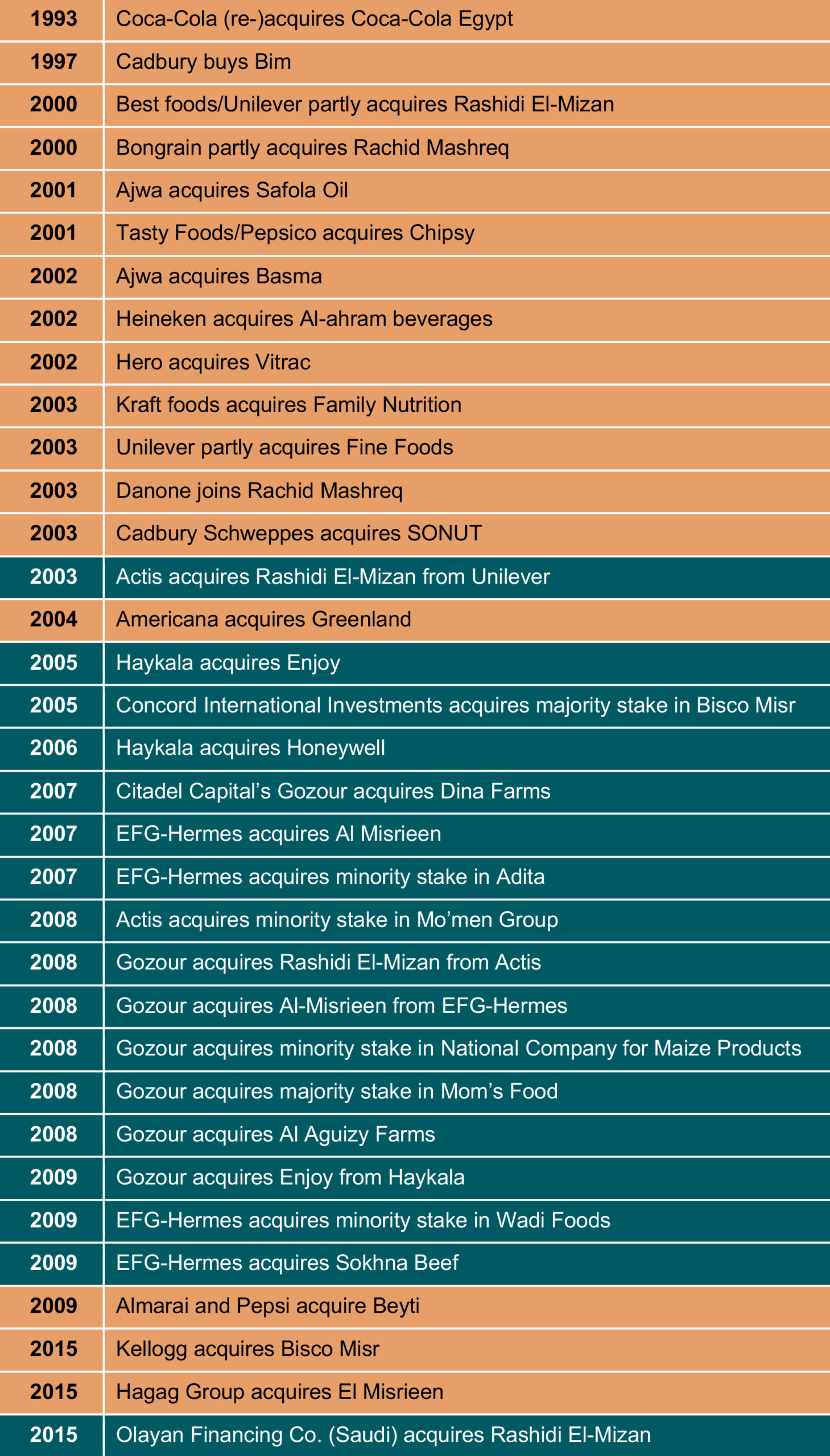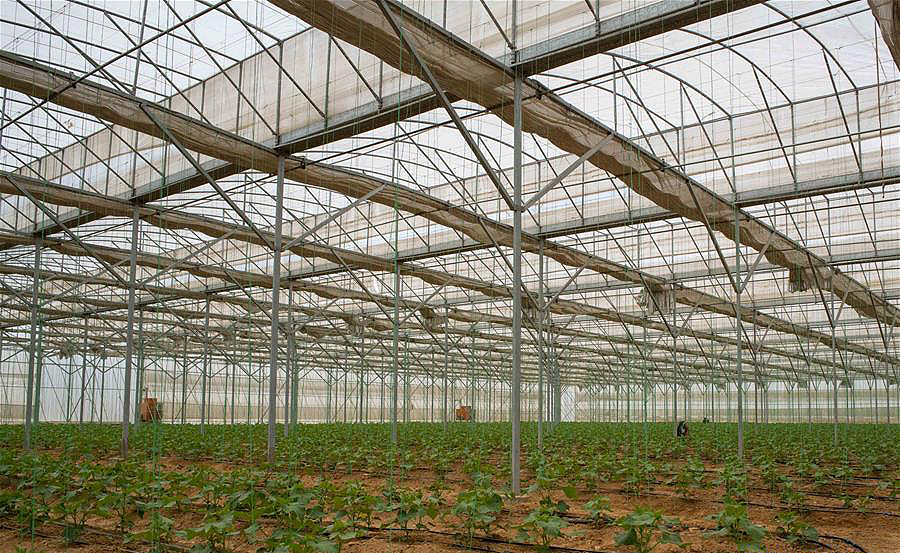May 13, 2024
#16: Finance and the Growth of Corporate Food in Egypt
North African and Middle Eastern actors and spaces have received very little coverage in the engagement with the finance-farming-nexus. Marion Dixon’s book The Frontier of Corporate Food in Egypt is an important correction to this geographical bias, offering a deep account of how the corporate food regime manifests itself in one of Africa’s largest economies.
***
The Frontiers of Corporate Food in Egypt, recently published by Oxford University Press, addresses the role of finance in farming and food markets. Agriculture and food changes have occurred rapidly in Egypt, as in many other middle-income countries, toward corporate-captured markets, greater inequality among agriculturalists, and diets high in unhealthy fats, sugars, and sodium. A key question is, what role did finance play in these changes?
The lens on finance that the book provides is on sectoral and non-sectoral financialization [1]. Sectoral financialization refers to the growing role of the financial sector for capital accumulation. New actors (private equity firms, hedge funds, sovereign wealth funds, etc.) and new products and instruments emerge within the financial sector.
Non-sectoral financialization is the growing reliance on portfolio income among non-financial firms. This process refers to non-financial firms relying increasingly on financial income ‘in the form of earned interest, dividends and capital gains on investments’ [2].
The concepts of sectoral and non-sectoral financialization were initially applied to the U.S. economy [3], but as The Frontiers of Corporate Food in Egypt shows, these processes in the United States enabled the growing role of finance elsewhere, including in Egypt.
What Happened in Egypt then to Make Financialization Possible?
One structural change to the Egyptian economy was the sale of large-scale state assets, including farms, that began in the 1970s and completed in the 1990s under waves of structural adjustment programmes. The privatization of these assets led to the creation of publicly-traded corporations as many of these assets (including especially food companies) were made public (IPO’d) [4]. The growth of publicly-traded corporations, as well as private ones, was part and parcel of the growing diversification of Egyptian family business groups (e.g., Mansour group, Pico group) and the (re-)entrance of multinational and transnational corporations (e.g., Coca-Cola, Unilever, Nestle, Heinz) [5].
It should be noted that the sale of state assets into the hands of a small number of private investors and corporate actors was not inevitable. The process of privatization was greatly contested within the country [6], and other options for the assets/companies were explored, for example, turning them into worker-owned cooperatives [7]. Nonetheless, what transpired greatly expanded the formal economy and the role of large actors in it.
A second structural change that was significant to sectoral financialization were financial liberalization laws, including the re-opening of the stock exchange that enabled the creation of publicly-traded corporations in the first place. Particularly the 2003 Unified Banking Law expanded the Central Bank’s authority and authorized the selling of public banks (via joint mergers) and the mergers of private banks. These policies were regional in character as many similar banking laws were enacted in the region around the same time [8]. A result was significant foreign capital penetration as well as the proliferation of new financial firms.
Private equity funds alone rose in Egypt from $533 million in 2004 to $6.4 billion in 2008 [9]. Most private equity funds in Egypt are created with private co-investors (generally sovereign wealth funds, institutional funds (such as pension funds), and Gulf investors with the firm’s managers, and institutional investors like the World Bank’s International Finance Corporation (IFC). In fact, the IFC and other institutional lenders have been major guarantors of private equity activity in so-called emerging markets like Egypt [10].
What these structural changes meant is that corporate actors—large Egyptian family business groups, TNCs/MNCs, and financial firms—rapidly diversified their holdings, vertically and horizontally, as the formal economy in the country expanded. The expansion into and within agriculture and food led to the rapid growth of not only agroexports (fresh fruits and vegetables, especially) but also food processing, corporate food service (e.g., franchises like McDonalds), and corporate food retail (hypermarkets and supermarkets, primarily).

Sample of Mergers and Acquisitions within Agriculture and Food, involvement of private equity firms highlighted in grey, 1993-2015. Source: author’s compilation.
In other words, the growth of a corporate agri-food system in Egypt is constitutive of the growth of a corporate-captured formal economy. Also, because of the nature of the mergers and acquisitions within agriculture and food, much of the growth of corporate food in Egypt is regional, connected to the growth of corporate food in the COMESA trading bloc [11], the Gulf Cooperation Council (GCC) countries, the northern Mediterranean, and beyond.

A corporate greenhouse in Egypt. Source: Xinhua/Alamy Stock Photo (reprinted from author's book cover).
Why Does the Growth of Corporate Food Matter?
There are many reasons why these changes matter, and one reason that will be highlighted is that the growth of corporate food has contributed to worsening living standards for the less well-off agriculturalists, as inequality among agriculturalists has grown. A few larger-scale, entrepreneurial farmers have done very well, supplying to corporate processors and agroexporters. However, the majority of smaller-scale agriculturalists have become increasingly vulnerable to a world market thousands of miles away and to volatility in farming.
To most commentators, the growth of markets provides new revenue opportunities for the poorest farmers. What they don’t see is how many of these farmers have already changed what they grow, supplying to a shrinking number of buyers with the growth of corporate food processing, retail and service.
Smallholders have been growing processing vegetables, the seeds for which they buy from corporate vendors, and they have been concentrating in animal protein (especially raw milk for the dairy industry). As Frontiers details, corporations of all types and financial firms have been consolidating what is grown, how it is grown, and for whom it is grown in part through (largely) informal arrangements with smallholders [12].
By growing what are ostensibly corporate crops, smallholders who are incorporated into these food value chains have lost genetic diversity between and within plant and animal species in farming. This loss of diversity increases the risk of pests and pathogens as well as vulnerability to extreme weather [13].
Those producing corporate crops are also more vulnerable to a highly volatile world market: World food prices rose steadily since the 1990s, but they also became more volatile [14]. For the poorest farmers, who often will agree to farm gate prices with traders at the beginning of the season to secure inputs needed in planting, higher world food prices do not translate into higher farm gate prices: Smallholders find themselves “squeezed,” between the higher prices for inputs and fixed (captured) prices for their crops [15].
Conclusion
Financialization led to very rapid growth of the formal economy in Egypt and a corporate agri-food system specifically. These changes greatly benefited large family business groups, corporations and financial firms, among others. Arguably, those to lose out most have been the majority of agriculturalists: smallholders. But many in Egypt, as in other middle-income countries, face food insecurity, or the threat of it, as food prices remain high.
[1] Krippner G (2005) The financialization of the American economy. Socio-Economic Review 3: 173-208. DOI: https://doi.org/10.1093/SER/mwi008. [2] Fairbairn, Madeleine. 2014. ‘Like gold with yield’: evolving intersections between farmland and finance. The Journal of Peasant Studies 41(5): 777-795, pp. 780. [3] In Krippner (2005) and Kripper G (2011) Capitalizing on Crisis: The Political Origins of the Rise of Finance. Cambridge, MA: Harvard University Press. ISBN: 9780674066199. [4] This information is based on a General Authority for Investment and Free Zones (GAFI) internally distributed document listing the top agribusinesses in Egypt based on the total issued capital between January 1970 and May 2010. [5] Transnational corporations (TNCs) and multinational corporations (MNCs) are distinguished by the breadth of their market reach: TNCs are corporations that are truly global and largely Western historically, and MNCs are regional. [6] Sfakianakis J (2004) The whales of the Nile: Networks, businessmen, and bureaucrats during the era of privatization in Egypt. In: Heydemann S (ed) Networks of Privilege: Rethinking the Politics of Economic Reform in the Middle East. New York: Palgrave Macmillan, pp. 77-100. ISBN: 978-1-349-52756-4; and El-Naggar A (2009) Economic policy: From state control to decay and corruption. In: El-Mahdi R and Marfleet P (eds) Egypt: Moment of Change. London: Zed Books, pp. 34-50. ISBN: 184813021X. [7] What happened initially to the state companies varied (based on the GAFI-internally circulated document). [8] UNCTAD (2005) World Investment Report: FDI Policies for Development: National and International Perspectives. New York and Geneva: United Nations Conference on Trade and Development, pp. 282. Available at: https://unctad.org/system/files/official-document/wir2005_en.pdf. [9] Ismail A (2009) Private Equity and Venture Capital in Emerging Markets: A Case Study of Egypt and the MENA Region. PhD: Massachusetts Institute of Technology, pp. 16, 61. Available at: https://dspace.mit.edu/handle/1721.1/55105. [10] Daniel S (2012) Situating private equity capital in the land grab debate. Journal of Peasant Studies 39 (3-4): 722. DOI:10.1080/03066150.2012.674941. [11] The Common Market for Eastern and Southern Africa (COMESA) was formed when the WTO was instituted, and Egypt joined COMESA in 1998. [12] For other case studies of smallholders’ integration into corporate value chains, see Ouma S (2015) Assembling Export Markets: The Making and Unmaking of Global Connections in West Africa. Walden and Oxford: John Wiley & Sons. ISBN: 978-1-118-63258-1; and Atasoy Y (2017) Commodification of Global Agrifood Systems and Agro-Ecology: Convergence, Divergence and Beyond in Turkey. London and New York: Routledge. ISBN: 9780367595166. [13] The book focuses on the vulnerability that agribusiness faces, with significant implications, and agribusinesses are much more capable of handling these setbacks than smallholders are. [14] Winders B et al. (2016) Life after the regime: Market instability with the fall of the US food regime. Agriculture and Human Values 33: 80. [15] The squeeze refers to the “peasant squeeze” that Rodney (1973) describes of the colonial-era monopoly trading companies. Rodney W (1973) How Europe Underdeveloped Africa. London and Dar-Es-Salaam: Bogle-L’Ouverture Publications.